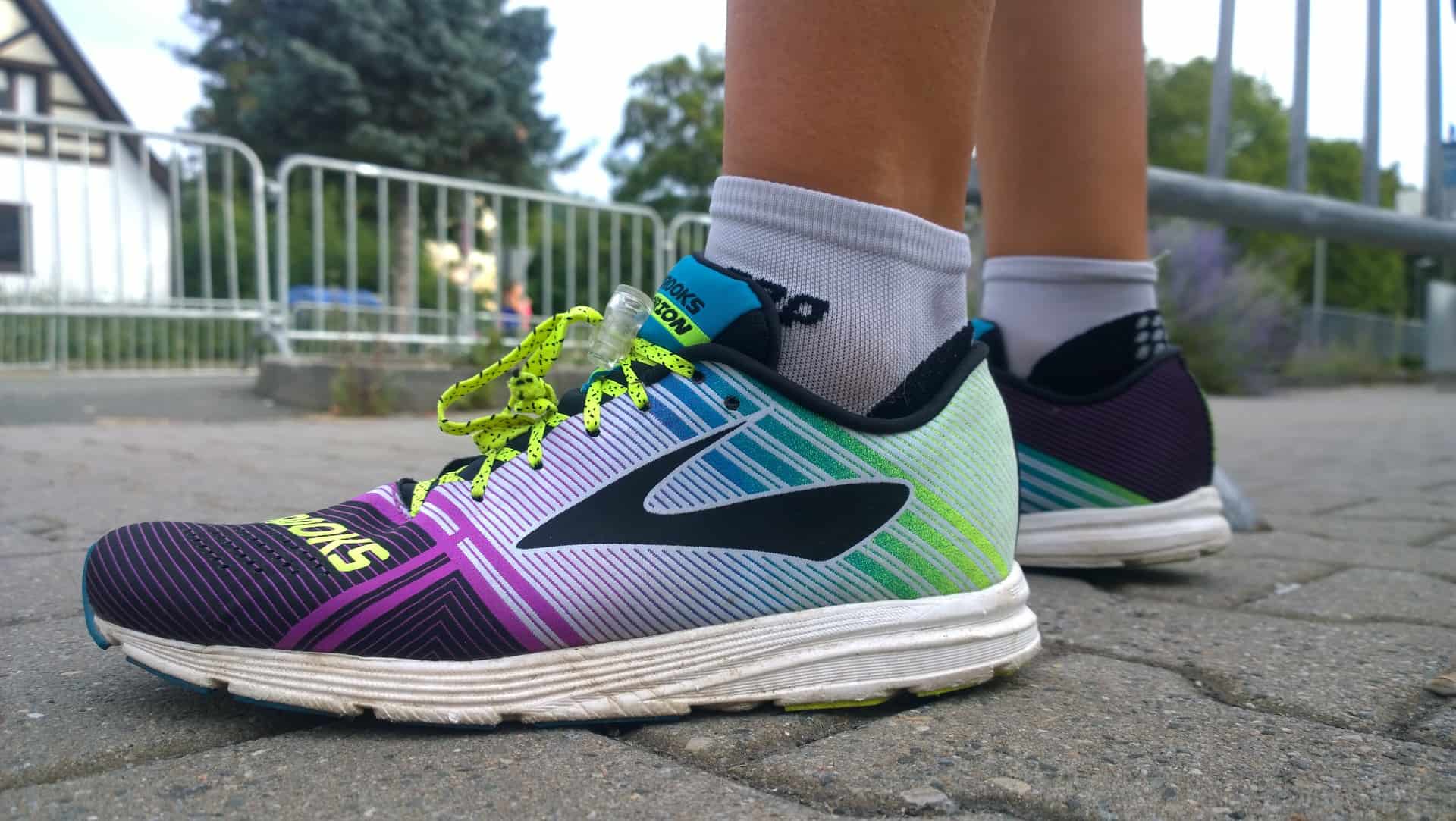Brooks and Hoka have been dominating the runner’s market with their durable, reliable, and ultra-comfortable footwear. Although they vary in design and construction, both brands have released some of the best running shoes in the business.
Since both companies create top-tier footwear of varying running styles, it can be quite challenging to choose the right brand that suits your needs. After all, they both feature a number of advanced technologies that are unique to the brand.
To help you decide which product best fits you, we’re going to discuss all the similarities and differences between the two major brands. Brooks vs Hoka: which brand is right for you? Let’s find out!
Brooks vs Hoka: Brief Company Overview
Before we dive into the more technical aspects of Brooks and Hoka running sneakers, let’s briefly discuss how they came to be.
Some people value the company’s ethics and history just as much as the products they produce, so it’s worth knowing their backgrounds before making your final decision.
Brooks
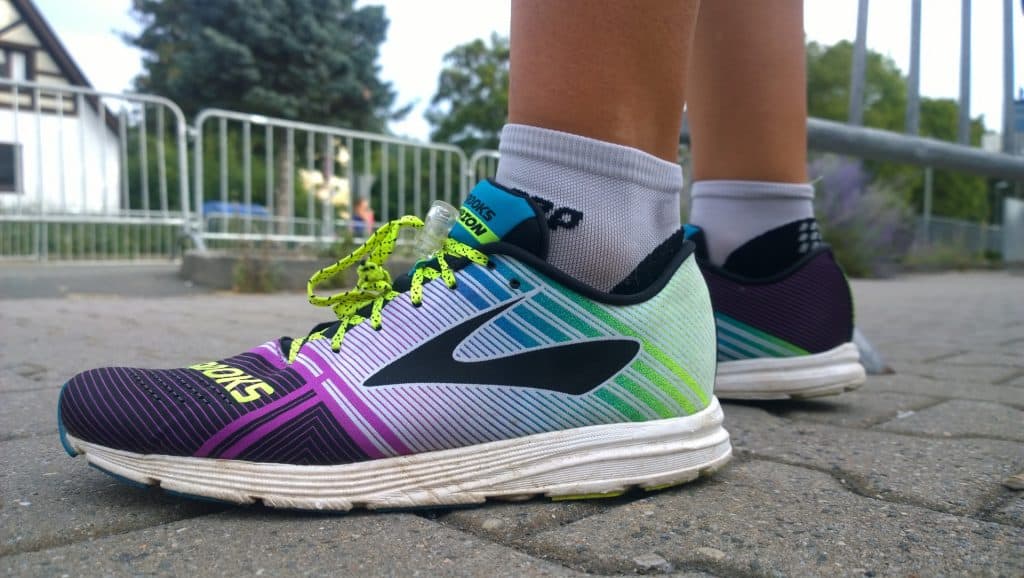
Brooks Sports, Inc., otherwise simply known as Brooks Running, is a sports equipment company that was founded in 1914 in Philadelphia, Pennsylvania. The company manufactures high-performance sneakers, clothing, and accessories for both men and women alike.
Initially, Brooks produced ballet slippers and bathing shoes. However, when the 1920s came, the company decided to expand its product line and dip its toes on other popular footwear, including baseball cleats, gymnasium shoes, and a whole array of other products.
Rise to Popularity
When long-distance runner Frank Shorter won the Olympic marathon in 1972, the company considered cutting much of its product line and instead focus on running shoes. By doing so, the company can expand its product line of running shoes without compromising quality.
Brooks proceeded with the decision and, by 2001, it became synonymous with running.
Although Brooks isn’t as popular as other big brand names like Nike, Adidas, and Saucony, the company made its own name in the running community.
Brooks shoes were awarded the title, “Best Winter Running Shoe,” and “Best Women’s Running Shoe,” in publications like Sports Illustrated and Runner’s World. It has also been recognized for its biomechanical technology and innovation.
By 2011, Brooks became the leading running shoe company in the specialty market. On its 100-year anniversary, the company’s revenue hit $500 million.
Environmental Sustainability
Brooks is known for its environmental sustainability and has implemented multiple environmentally-conscious practices on its products.
The company uses recycled materials for some of the parts in their shoes, like fabrics, tags, laces, and packaging.
They’ve also partnered with Bluesign Technologies to manage, evaluate, and eliminate priority chemicals from their products.
On top of that, they’re a member of the Sustainable Apparel Coalition, a global organization that works further to reduce their environmental and social impact on footwear products.
In 2014, Brooks relocated its headquarters in Seattle, Washington. The building the company erected is considered to be one of the greenest buildings in the world, as it uses 75% less energy than typical commercial buildings.
Hoka One One
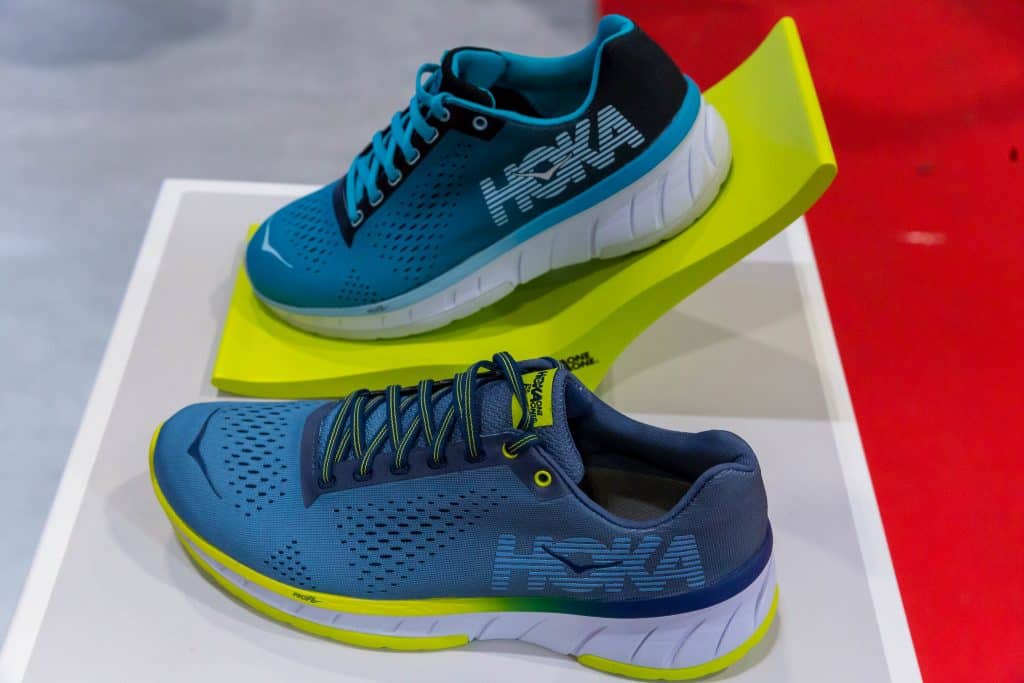
Founded in 2009 in Annecy, France, Hoka One One, pronounced as Hoka On-Nay On-Nay, is an athletic shoe company that produces top-of-the-line running shoes.
The company first gained national attention with its innovative “maximalist” shoes—i.e., running shoes with oversized outsoles—which feature extra padding and cushioning for supreme comfort. Up until that time, most running shoes were minimalist shoes.
Hoka One One was built when founders Jean-Luc Diard and Nicolas Mermoud designed a shoe that allowed runners to run downhill much faster. They’ve achieved this incredible feat by creating an oversized model that had more cushioning than other running shoes of the era.
In doing so, they’ve inadvertently reinvented the running shoe.
Later, the two named the product “Hoka One One,” a Māori phrase that loosely translates to “fly over the earth.”
Rise to Popularity
Upon its release, the shoes were immediately recognized by ultra-marathon runners due to their cushioning and stability.
However, thanks to its maximum cushion and minimal weight, it quickly gained quite a reputation throughout the sports community. It also became increasingly popular among professionals like nurses and doctors who tend to walk on hard surfaces all day long.
Compared to Brooks, Hoka One One is a “baby” in the world of athletic shoes. Even so, Hoka is still considered to be among the best athletic brands in the running world.
Today, Hoka has designed numerous running, walking, outdoor, and fitness products that fit the needs of a variety of users.
Environmental Sustainability
Although not as globally impactful as Brooks, Hoka is a sustainable brand in its own right.
In 2016, the company joined the United Nations Global Compact (UNGC), a worldwide corporation that encourages sustainable and socially responsible business practices.
Additionally, Hoka actively uses eco-friendly products in its footwear, and sources 90% of its materials from sustainable suppliers.
The company has likewise established its own sustainability goals, focusing on water consumption, reducing waste, and energy usage, as well as advocating for human rights, gender equality, and promoting diversity.
Brooks vs Hoka: Notable Similarities and Differences
Now that we’ve talked about the company’s history, it’s time to delve into the similarities and differences between the two brands. Each product has its own perks and unique characteristics, which are all discussed below.
Upper Sole
The majority of Brooks’ shoes are designed with a larger toe box. Although not as wide as the toe box found in most Altras shoes, they’re considerably larger than their close competitors Nike, Saucony, and ASICS.
Due to this, Brooks footwear is ideal for individuals with wide feet or bunions. Moreover, Brooks has an excellent online chart to give you an idea of what to look for in a running shoe.
Conversely, Hoka One One shoes are traditionally designed with a close-fitting toe box. Some of their newer models have a wider toe box as per request, but the majority of their products still employ the tight-fitting toe box design.
While Hoka running shoes look a bit clunky, but they actually hug the foot quite well. The shape and design encourage a smoother and more efficient walk, which is why they’re often the first choice among long-distance and ultra-marathon runners.
Outer Soles
The outer soles of Brooks shoes are entirely made of rubber.
Some models are equipped with a rock shield made of thermoplastic EVA sheath to protect your soles from objects typically found on the trail, like branches and rocks. The EVA midsole foam provides sufficient cushioning to absorb shocks from jumps and falls
Others feature a specialized rubber outsole dubbed as “Trail Tak,” which gives users enough traction to run in both dry and wet conditions.
Hoka outsoles are made of rubberized foam to give users a bit of extra spring on their steps. Hoka outsoles are considerably larger than that of Brooks, making them quite responsive to fast movements.
Cushioning
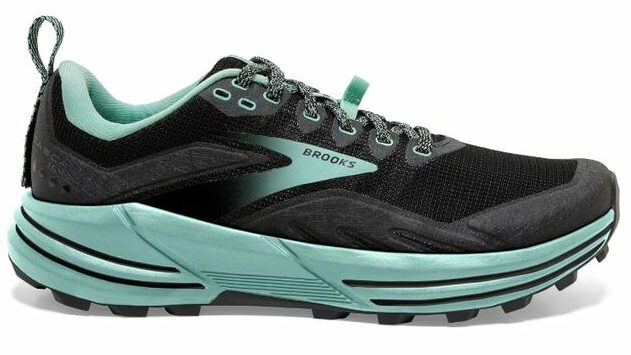
Brooks and Hoka both offer impressive cushioning and shock absorption, but Hoka definitely takes the crown in this category.
Hoka’s running shoes are specifically built for long-term comfort and stability. In fact, the company calls the midsole “bucket seats” because it imitates the comfort of a race car’s bucket seats.
Hoka’s midsole foam features three levels of cushioning, which is neither too soft nor too firm.
In terms of fit and feel, they fall under “just right,” making them the top choice for highly competitive runners. They provide just the right amount of land and stability for push-off. Also, Hoka’s newest models feature longer heels which improve heel-to-toe transition.
With that said, Brooks falls extremely close to Hoka with cushioning.
The company uses two types of cushioning designs on their products; DNA LOFT, which adapts to a runner’s speed, stride, and overall profile; and BioMoGo DNA, which offers the same features as the LOFT except with more balance and spring.
Both cushioning returns 10% to 20% more energy compared to other running shoes of the same caliber.
While Hoka is known for its cushioning, Brooks is known for its guide rails. This makes the midsole quite different from Hoka. The guide rails in Brooks’ shoes keep runners’ feet in their preferred alignment without altering their movement.
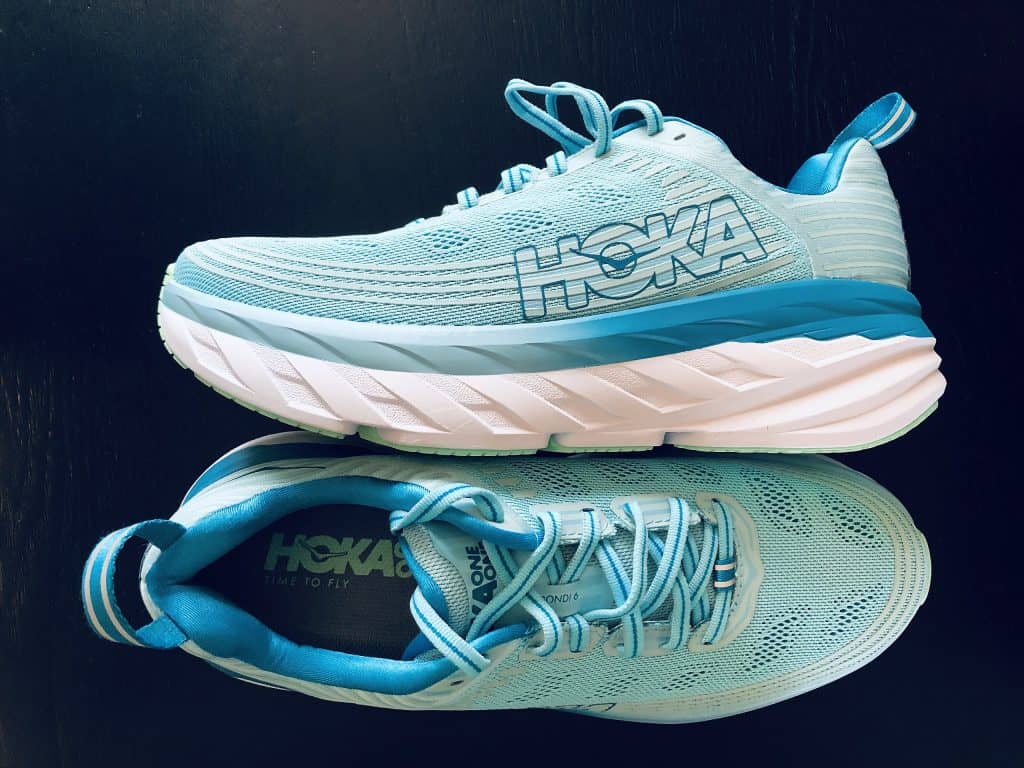
Durability
Both companies more or less have the same lifespan.
According to Brooks, Brooks footwear has a life expectancy of about 300 to 500 miles when used for its intended purpose.
So, if you run about 20 miles per week, Brooks running shoes might last anywhere from four to six months.
Hoka lasts slightly longer than Brooks with a life expectancy of 400 to 600 miles. Its extra longevity is perhaps attributed to its maximal design.
Stability
Again, Brooks and Hoka both excel in stability.
As previously mentioned, Brooks’ GuideRails technology stabilizes a runner’s stride based on their natural movements rather than “fixing” it.
This stabilization technology not only allows joints, knees, and hips to move naturally but also offers support whenever a runner’s stride is off.
Hoka utilizes the “bucket seat” design to improve the stability of its footwear. The wide midsole platform allows runners to move at a much faster pace without risking injury.
Shoe Type
Brooks and Hoka categorize their footwear in three main categories: stability running shoes, neutral running shoes, and cushioned running shoes.
Stability Running Shoes
As you might expect, stability running shoes are advertised towards professionals, long-distance runners, and individuals with pronation issues.
Brooks’ most popular stability running sneakers, the Brooks Adrenaline GTS, feature a GuideRails Holistic Support System, a soft, secure fit, and a DNA LOFT for a buttery smooth stride.
The Hoka Gaviota is a comparatively similar product. Although all Hoka footwear is designed with stability in mind, the Gaviota takes things to a whole ‘nother level.
Featuring a J-Frame technology, the Gaviota provides stability without compromising comfort. In fact, it over-delivers on plushness by adding two extra millimeters of foam than its predecessor. The Gaviota is “plushness on steroids,” according to Hoka, at least!
Neutral Running Shoes
Neutral running shoes are designed for individuals who have a correct or neutral running pattern.
Neutral running shoes are the most popular type of running shoes on the market, making up around 85% of global sales in the footwear industry.
Although they don’t come with stabilizing features, they excel in comfort and cushioning.
The Brooks Ghost and the Hoka Clifton are two of the best neutral running shoes across the globe. They’ve both won multiple awards and have been consistently recognized as among the most innovative neutral footwear in the industry.
The Brooks Ghost, in particular, won the “Best Cushioned Running Shoes of 2019,” hosted by the publication Runner’s World.
Cushioned Running Shoes
It isn’t much of a surprise that Brooks and Hoka sell some of the best-cushioned running shoes in the market. After all, both brands go out of their way to create the bounciest, softest, and most comfortable footwear known to mankind.
The Brooks Glycerin and the Hoka Bondi are two of the most premium cushioned running shoes you can find today. They provide plenty of bounce and smooth transitions for runners at all levels.
The Brooks Glycerin features a DNA Loft foam and an Ortholite sock liner, making it the ideal footwear for people who are on their feet all day long (i.e., nurses, retail workers, and construction workers).
Despite all the cushioning of the Glycerin, Brooks still somehow managed to keep it light at under 9.5 ounces.
The Hoka Bondi is the most cushioned running shoe in the Hoka lineup. It features strategically placed cushioning and ultra-soft memory foam that makes users feel like they’re wearing pillows.
Moreover, the Bondi’s beveled heel design not only offers a smooth transition but also increased comfort and durability.
Foot Support
Most of Brooks’ footwear is designed for individuals with medium or high arches.
They feature an extra form of reinforcement with the textured heel counter, granting more support on the back of the foot. Brooks’ 3D Fit Print technology embraces the feet for extra stability, comfort, and support.
On the other hand, Hoka’s wheel-like shoe shape adheres to the user’s natural running pattern, thus increasing the product’s overall efficiency. Furthermore, most of Hoka’s shoes are designed with embroidery reinforcement for optimal middle section support.
Shoe Weight
The weight of the running shoes you’re wearing may impact your overall performance.
According to studies, adding about 100 grams (3.5 ounces) per shoe impairs a user’s running economy by about 1%. So, in theory, the lighter the shoe, the better.
However, ultra-light shoes generally lack cushioning, which may also slow you down. In fact, cushioning is said to improve your running economy by 3% to 4%. Therefore, you need to search for a pair that balances both weight and cushioning.
As previously discussed, Brooks and Hoka both offer supreme cushioning, with Brooks falling slightly behind Hoka. Therefore, the only thing you’ll need to look at here is weight.
The average weight of Brooks running shoes is around 7 to 9 ounces, while Hoka is slightly heavier at an average of 8 to 9.5 ounces.
The additional weight in Hoka footwear is caused by the extra cushioning. But although slightly heavier than similar models, one could argue that they’re still fairly light considering the thick cushioning material they’re designed with.
Price
Brooks footwear is slightly cheaper than Hoka footwear, ranging between $100 to $250 compared to Hoka’s $150 to $300.
Two of their most popular models, the Brooks Clifton L and the Hoka Levitate StealthFit 5, fall in the $150 price range, so expect to pay around the same for both products.
Both brands offer a range of runner-specific footwear with differences in technology. Needless to say, the more expensive the footwear, the more options it’ll have.
For instance, the Brooks Levitate GTS 5, which costs around $150, features added smart support, a super springy feel, and supreme stretch and structure.
In comparison, the Brooks Signal 3, costing around $85 to $100, features all-day versatility and comfortable cushioning, but it’s more suitable for beginners rather than professionals because it lacks support and structure.
Final Thoughts
We hope this article helped you decide which shoe brand best fits your style and needs!
Brooks and Hoka produce some of the best quality running shoes in the footwear industry, so you really can’t go wrong with either of them. Plus, they’re eco-friendly and source most of their materials from sustainable suppliers.
If you value cushioning more than anything else, whether it be due to personal or medical reasons, consider getting yourself a Hoka.
Hoka footwear is designed in a way that allows users to put orthotics in their shoes if the need arises. This is especially beneficial for people with plantar fasciitis and flat feet.
On the other hand, if you’re searching for footwear that offers traditional running shoe comfort and stability, we encourage you to go with Brooks.

